
Hi!
Welcome on my website
where
my ideas might be
YOURS!
Update 2012-11-12
compteur visiteur
Welcome to my website. [French version]
SCIENCE has always been my principal passion.
My space-time continuum (lol) is now :
ALBERT EINSTEIN
changed our way of understanding the universe almost one century ago.
He's also been my favorite theorician until ...
...... that day a ligthray went across my mind !!!!!
In fact, the lightray went perpendicularly across a mobile, just as in the "mind experiment" proposed by Einstein.
|
What does a moving observer see ? The right lightray trace or the left one ? |
|
|
The straight trace or the slanted one ? |
|
So my first questions to come are :
-
How can a moving portion of space delimited here by the walls of the mobile make light deviation ?
-
Is an observer able by his simple look to bend the light path ?
-
What is the correct and only path for light in this region of space ?
Einstein's photons go weird ....
My answer : the left traces are the right ones :)
Why, will you ask ?
Because the light does not move differently for different observers. IT MOVES THE SAME ABSOLUTE WAY WHATEVER THE OBSERVER'S STATE.
It is independant from the movement of the source which creates it and also it is indepedent from the point of view of any observer. Its real and absolute path is only replaced in the observer's reference frame and not vice versa.
SPECIAL RELATIVITY vs GENERAL RELATIVITY
Let's see now how Einstein contradicts himself when interpreting the ligth path in his 2 theories.
Let have a light ray go across a spaceship while this one is in phase of acceleration.
Einstein said that the trace of the light is bent down to the floor, when seen by a space man aboard.
He then stated that "Gravity, equivalent to acceleration force, bends light and space"
and
General Relativity Theory is born. In this case, Einstein admit that the lightpath bend towards the back of the ship. But in the light clock experiment, he thinks that the light path is bending towards the front of the mobile so it will be able to reach the mirror which is moving away.
How could a different movement of the ship (one in accelerating motion and the other in uniform speed) make the lightray to behave differently ?
In acceleration motion, while starting with this.
Viewed by an static observer, the light goes horizontally straight across the ship. ---> But for the observer on the ship, you'll get this !
The ligthray bends to the floor in the opposite direction of the movement.
SO
What will a lightray trace be when the spaceship is not accelerating
BUT
is only in CONSTANT SPEED movement ?
Answer:
WE MUST GET A STRAIGHT LINE DOWN TO THE FLOOR !
OR
TO THE BACK OF THE MOBILE IF IT GOES THIS WAY.

Now, let's see how the ligthray path is seen by an onboard observer for the different situations of motion

Deviation of photons (wrt an moving observer) in different types of motion.
Here is an example from Einstein's mind that you can see in every physics book to demonstrate that Space and Time are not absolute. They depend on each observer's referential frame. And while changing referentials, we need to apply some "Lorentz formulas" that leads to Space contraction and Time dilation :

And what if we reverse the observation ? The light clock stays in the lab and we observe it from a moving frame ! Here what we see !

The BIG BIG ERROR is that light DOES NOT move the way it is showed (bouncing between the 2 mirrors while the mobile keeps going on to the right. Let's see how now !
Here is how the photon moves between two mirrors while these ones are moving to the right side.
When the mirrors move quickly, here is what happens! The photon missed the mirror. The ligth clock will not work any more. The photon has escaped the experimental device.

In fact, when the mirrors move more slowly (or in the case where its speed is very slow with respect to the ligth speed), here is what happens ! The photon could bounce some other times between the mirrors and would miss them at the end when these latters had finished moving pass it.
You can also remark that, for the moving observer, the photon looks as if it moves backwards.

Conclusion
To get an light clock to work a longer time, we must arrange to put the two mirrors (the walls of the cavity) perpendicularly to the direction of motion.An example for those who still think that light is going after the mirror.
Everyone has heard of the Foucault pendulum. It's not light we are talking about here. It's material stuff that oscillates in a plane while the Earth is spinning around. The pendulum does not stay still in the reference of the walls. It turns around and stays in the plane where it's launched : the "geodesic" plane, ie the plane fixed in space. It's the same thing for light clock, isn't it ? just imagine a pendulum that oscillates as fast as light. It will still spin around as the walls move away.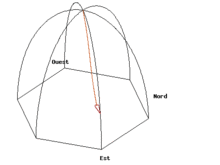 Movement of the pendulum during Earth rotation (camera view in the plane of oscillation)
Movement of the pendulum during Earth rotation (camera view in the plane of oscillation)
 Movement of the pendulum during Earth rotation (camera view from the Sun)
Movement of the pendulum during Earth rotation (camera view from the Sun)
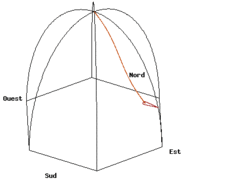 Movement of the pendulum during Earth rotation (camera view from the wall)
Movement of the pendulum during Earth rotation (camera view from the wall)
One more example for those who are still not convinced of that.
Everyone has heard of the gyroscope. It's another proof of the absolute movement in space. The gyroscope flywheel will maintain its spatial "geodesic" orientation independantly from the external (input or output) axis configuration. Then if you look at the spinning wheel by the edge, a point on it will be seen as an oscillation in the absolute plane of rotation whenever the gyroscope frame is turned around. That's the same movement as the light clock bouncing photon in a spheric cage. Light must have some sort of super angular momentum to prevent it from bending while propagating. I hardly imagine that a translation of a train can affect the direction of a light path.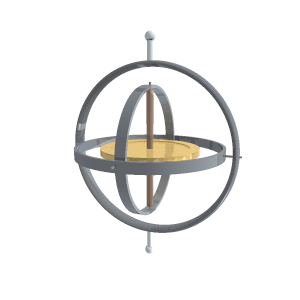 A gyroscope in operation with freedom in all three axes. The rotor will maintain its spin axis direction regardless of the orientation of the outer frame.
A gyroscope in operation with freedom in all three axes. The rotor will maintain its spin axis direction regardless of the orientation of the outer frame.
Conclusion
Light is an oscillating phenomenon. Non polarized light is a rotational motion just (like gyroscopes) whereas polarized light oscillate in a plane (like pendulums). In both cases, light maintains its target direction at its emission with respect to the absolute spatial reference of the universe.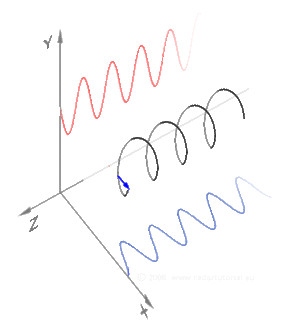
One last example that proves that light speed is affected in motion frame : Sagnac laser ring
You certainly heard about Sagnac experiment with two light rays travelling counter-wise in a loop.
Such interferometer shows a frequency shift when the ring is rotating. When the platform is rotating, the point of entry/exit moves during the transit time of the light. So one beam has covered less distance than the other beam. This creates the shift in the interference pattern. Therefore, the interference pattern obtained at each angular velocity of the platform features a different phase-shift particular to that angular velocity.

See this link on Wikipedia for more information.
 The blue lightray has to go more than a circumference to hit the target that runs away while the red one has a shorter path. See also the fiber optic gyroscope (FOG) page based on the Sagnac effect.
The blue lightray has to go more than a circumference to hit the target that runs away while the red one has a shorter path. See also the fiber optic gyroscope (FOG) page based on the Sagnac effect.
Is light speed the same for everyone ? Yes, for sure. Here's why ?
Let Alice (point A) be at a 10 light-second from Bob (point B). If Bob sends a flash of light (the information) at t=0 towards Alice, Alice will receive the information 10 seconds later if she stays static at her place. So the time of translation is 10s with the travel distance (B to A) of 10 light-second gives the "speed" of translation equals to c.
Now, if at time t = 0, Bob sends the flash and at the same time, Alice decides to move towards him at light speed. When the flash reaches half-way (5 light-second) at point C, Alice will also reach this point. Then she will receive the information at t = 5s. (Note that special relativity theory will compute a dilation of time for Alice's clock so that she will get the information at t=0 because she is moving at light speed. I don't agree with that but it's another problem). So the time of translation is 5 seconds with the distance run by the flash of 5 light-second (don't forget that the flash has only travelled half-way to reach Alice) will still give the "speed" of translation equals to c.
In the 2 cases, the light flash always moves at speed c. But in the second case, Alice has moved to get closer to Bob and she only gets the information EARLIER because she IS NEARER. People often mess up here when they say that the 2 speeds (Alice's and the information's) will add up and do the following calculus :
distance of 10 light-second / time of translation 5s = 2 times speed of light
In fact, there is no addition of speed. The initial distance of 10 light-second (AB) is no more relevant because Alice has moved away from point A. The distance is now CB (that is 5 light-second). So the calculus is :
distance of 5 light-second / time of translation 5s = speed of light
That is the same when two mobiles A and B go towards each other in classical speed (very small wrt speed of light). If mobile A observes that mobile B is approaching at (speedA+speedB), neither of these 2 mobiles is really going at (speedA+speedB). That is the big mind error we've been told at school.
SO YOU DON'T NEED THE WEIRD LORENTZ SPEED COMBINATION TO MAKE ALL SPEED ADDITION SMALLER THAN SPEED OF LIGHT. IN FACT, THERE IS NO SPEED ADDITION ANYWAY AND THIS, AT ANY CLASSICAL SPEEDS OR RELATIVISTIC SPEEDS
Let's have a last one.
At time t=0, Bob departs at light speed and in the meantime, he sends a flash towards Alice static at point A. For me and most of people (non-SR ones), he will reach Alice at the same time (t = 10 s) as the light flash because they all move at the same speed. Special relativity people will tell you that Bob will still see the flash moving away ahead from him at speed c as he gets nearer to Alice at speed c. Then he MUST "see" the flash reaching Alice before he does. The other question is : if so, for Alice, which "information" (flash or Bob) will reach her first ? :-)
Do you know Lucky Luke, the fastest shooter who can beat his own shadow at gunfight.
Awesome, isn't it ? ! How can that be ? How can a bullet go faster than light that makes the shadow ?
Let me tell you how.
Just get a train that travels at light speed ...  ... and put Lucky Luke on it.
... and put Lucky Luke on it. .
.
Now, the bullet can go faster than light because it gets the impulse from the gun AND from the train overruning by the way the light at its own speed. The shadow is beaten at uneven speedfight.
Let's look at the situation here. We have 3 observers.
- Observer One is on a static platform,
- Observer Two in the middle of a train,
- Observer Three in a plane.
At time 0, they are all aligned when observer One sent a flash to the front A and the back B of the train.
Which end will be reached first by the flash ?
Now let's see the different answers from our 3 observers a tiny moment later.

- Observer One (green) says : "The flash reached end B first because B is closer to me than A".
- Observer Two (red) in the train says : "The flash reached both ends at the same moment because I am as far from A than B".
- Observer Three (orange) in the plane says : "No, the flash reached A before B because B is further to me than A".
Which one is right ? Einstein said: "All of 3 are right", even if the answers raise some paradoxes in our usual world.
But, if Einstein is right then if event "A is reached first" AND event "B is reached first" cannot be true in the SAME universe,
we have to imagine the possibilities of multiple universes to permit these events to happen TOGETHER.
Each observer will have a particular "frame" generated specially for him according to the way he moves.
As his space is different, his time will also be different. So this is the basis for Special Relativity Theory (SRT) with time dilation effect,
length contraction, and so on...
By the other way, I think that there is only one right answer among our 3 observers :
observer ONE standing on the platform !
He is definitely in the most static frame which is the best to be taken as an absolute referential frame for all the events of our situation,
especially for our flash because light moves in an ABSOLUTE WAY independently from any outer effect (I just ignore gravity here !).
In the same time, the flash wil move the same distance in either way. It will hit in the first place the target that comes the closest.
SRT pros will argue this : it's observer 1 on the platform that moves away and not observer 2 who is static in the train. I think that it's not a relevant argument. We all know in this case that it's the train that moves and not the platform. SRT pros want us to accept that because motion is relative so you can never say which one is moving really with respect to the other. That is not right. There is always a DIFFERENCE between relative speed and real motion. In our case, even if relative speed may be perceived by both observers, trains do move and not the ground below them.
The big mistake in the reasoning of observers Two and Three is that when they are moving, their referential point is moving
from the ABSOLUTE starting point too. But they keep it as a fixed point of reference to determine their distance to the two targets A and B and not the distance the flash has to go to hit to derive their final answer. But that is not correct. It's not because you are moving to a target that you change the course of the flash bullet.
Conclusion : Only observer One is correct because he did not move away from the absolute point where the flash really starts in the most static frame.
If the back of train B gets closer (while A is moving away) to the point it starts, the flash will indeed hit B before A.
|
The Special Relativity Theory reviewed and corrected .......
I propose you to download the next PDF files to get a reviewed point of Einstein's theory of special relativity. Click to download (The PDF documents below are now in English.) |
DOCUMENT 1In the purpose of his theory on relativity at the beginning of the last century, Albert Einstein suggested some original experiences called “mind games”. These ones set up simple physical phenomenons (light propagation) in current life situations (a rolling train, a lift cabin moving up, and so on …) for a large public comprehension.
|
DOCUMENT 2The new interpretation of the famous thought experience by Einstein that I have presented in my document "Special Relativity Theory reviewed and corrected (first part)" has permitted to show up the possibility to reveal, for any mobile, its proper movement without a need of an external reference, unlike Galileo's belief.
|
DOCUMENT 3This document has been made to allow me to answer to very pertinent remarks from some of my contradictors. I wish to thank them for their spontanous reactions to my work.
|
DOCUMENT 4In my previous demonstrations, a beam of light has been emitted either perpendicularly to the direction of moving train, either slightly deviated ahead to compensate the movement of the target.
|
DOCUMENT 5At the end of the XIXth century, we supposed that the light waves moved on an immaterial support called "aether". By analogy in elements transported by a fluid, the speed of light, more exactly photons which compose her(it), had to change as they went down or went back up the current created by the movement of the Earth.
|
DOCUMENT 6 : THE LAST BUT NOT THE LEASTIn order to give you an idea of this deviation, just look at these 2 pictures :
|
Generalized law for Bradley light aberration
Applet created on 7/1/04 by Jean DAVID with CabriJava Do you want more ????????? |
|
compteur visiteur
statistique visite
statistique trafic
 Long will be
Long will be
the road
to
the Truth
Come hit the page anytime you want.
Links to visit
For your next journey in France :
- The French Railways
- Paris, city of lights
- The Parisian Subway
- The LOUVRE Museum
- The EIFFEL Tower
- Opera me !
- Links to Physics URL
My belief in a true world
======
Peace in Palestina

Will the cancer still be growing ?
Want to get in touch with me ?
For any reason, email me!
jeandavid54@aol.com




 Michelson at work .....
Michelson at work .....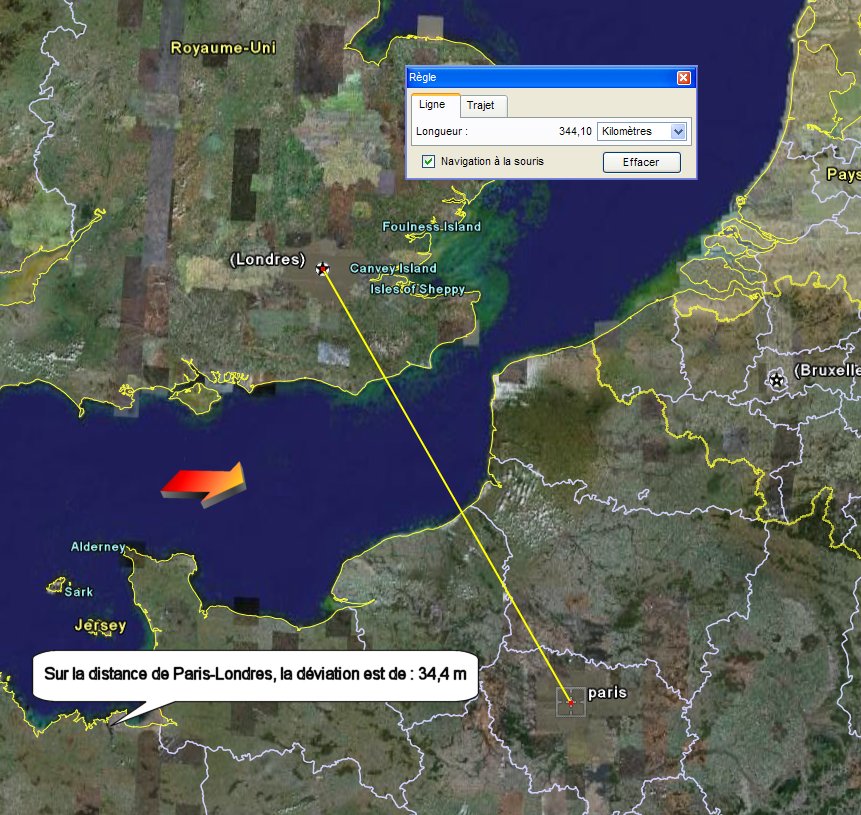
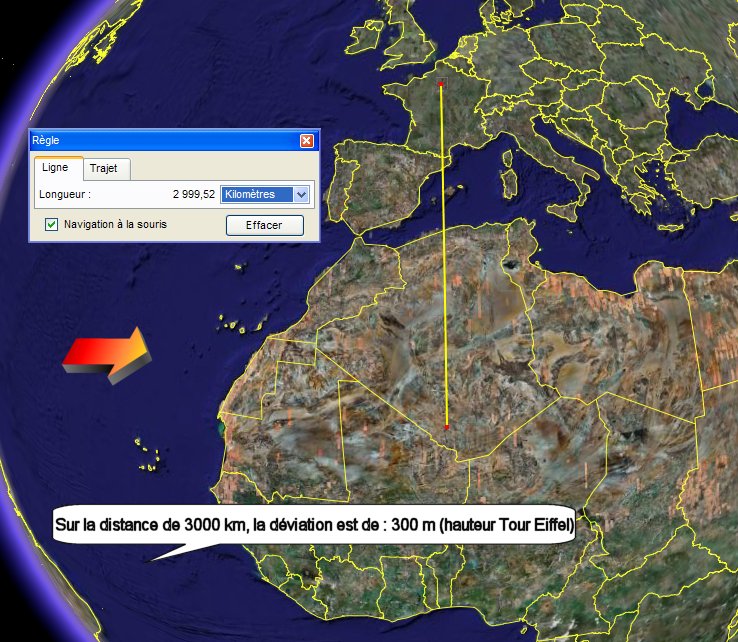
 Do you STILL agree with Einstein ?
Do you STILL agree with Einstein ?